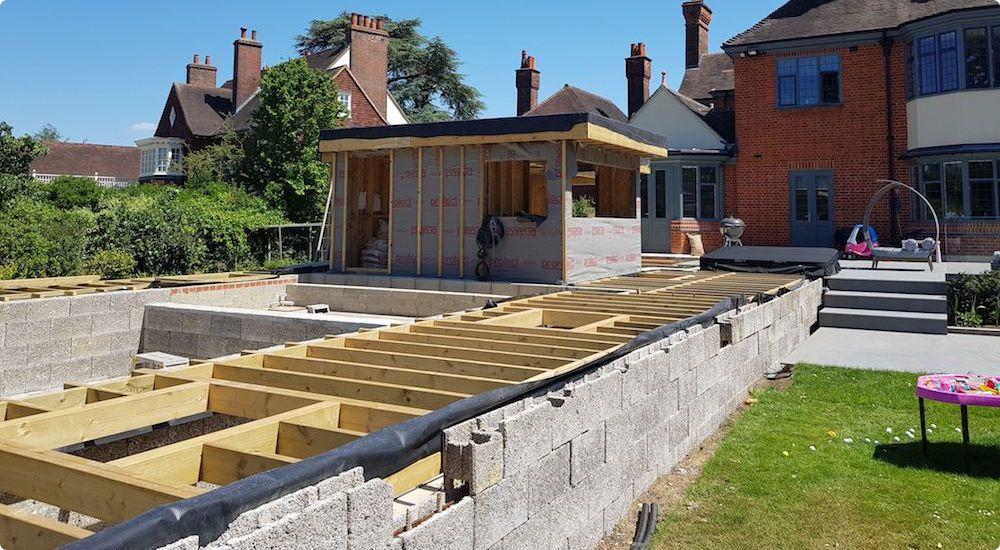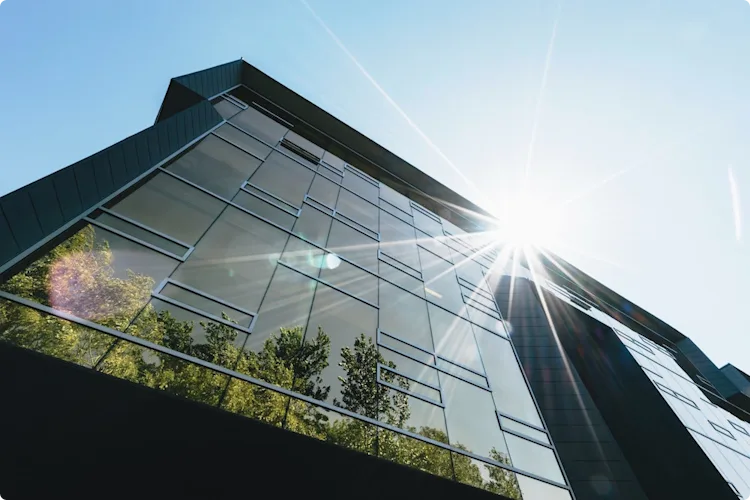Sustainability is something we are encouraged to think about in every aspect of our lives. As the UK’s leading residential architectural practice, we're constantly keeping our eyes and ears open for positive industry alternatives that ensure your dream home can be designed and built sustainably, without compromising quality.
To help you explore your eco-options, we asked our team to tell us what green materials they've been finding on construction sites...
Woodcrete
As the name suggests, woodcrete (or timbercrete) is an alternative form of concrete. It is much better for the environment due to its manufacturing process, which replaces some of the more energy-intensive components of normal concrete with recycled wood. This is then either used in place of normal concrete, or is used to create ICF (Insulated Concrete Framework) bricks, used like any other hollow concrete block in the walls of your build. The bricks are then filled with the woodcrete mixture to great effect.
As well as being a sustainable alternative, ICF woodcrete bricks have many other benefits. Their low energy manufacturing process means they are generally cheaper than traditional building materials. Their thermal efficiency is also better than those of traditional concrete solutions, meaning you’ll cut costs on your energy bills. Shipping costs are also cut as they are manufactured in the UK, which is good for the environment too.
These ICF woodcrete bricks are something that have featured in Resi projects before. This large pool house project used Durisol ICF woodcrete bricks with reinforcing bars to create the walls of the pool structure. As well as meeting the client’s wishes to build sustainably, this alternative also saved him money.

Cork
While you might think cork is only useful for plugging up bottles of bubbly, it is in fact a very versatile construction material notable for its sustainability and eco-efficiency. As a bark, it can be harvested from a tree without killing it, allowing for the tree to continue producing cork every year. This also means cork can be produced without diminishing forests, which themselves are highly efficient in retaining greenhouse gasses - the main source of climate change. A further benefit of Cork is it is fully recyclable, meaning many cork products can be reclaimed and reused. You don’t get much eco-friendlier than that!
Cork’s use in construction varies due to its mix of properties. Its unique structure, filled with air pockets, make it a great insulator of sound and heat, which has seen it used as insulation in ceilings, walls and flooring. As a wood, you might think of cork as flammable and susceptible to rot, but it is actually mold and fire retardant, which makes it safer than some traditional construction materials. If maintained properly, cork is extremely durable, and not to mention waterproof! Why else would we trust it to bottle up our lovely wine?
It’s not all golden for cork though unfortunately. For a start, cork oak is not grown natively in the UK, and instead must be shipped from the Mediteranian, immediately making it less eco-friendly and more expensive. Cork is also durable, but in some applications, like flooring, it will require proper maintenance, which might be a problem for some housework-hating homeowners. Another issue with implementing cork into UK homes is our climate. It cannot be used as an external cladding due to the effects prolonged wind and rain will have on its integrity. But there are still lots of interior uses for this super sustainable solution!
Recycled Plastic
When talking about sustainability, plastics are a common enemy. They have an extremely damaging manufacturing process which releases lots of carbon dioxide into the atmosphere, but most of it also ends up in landfill, fulfilling only a single use before being chucked away. This is why recycled plastic materials are so beneficial. Recycled plastic materials require 66% less energy in how they are manufactured than normal plastics, they release 250% less carbon dioxide into the atmosphere, and they give plastic another crucial lease of life.
Recycled plastic can be used for both interior and exterior construction, with products like decking, paving and cladding used in many forms of UK building, including homes. Just like virgin plastic, recycled plastic is extremely durable, and means you won’t have to worry about the strength or integrity of your home project over time. This is also good news for your wallet, as the lifetime costs of building with recycled plastics are much lower than some construction alternatives, such as wood, which may require maintenance in the long term.
Bamboo
If you’re really dedicated to building sustainably, look no further than bamboo. Bamboo is one of the fastest growing plants on earth and is typically harvested every three to six years, much faster than the 25 plus years for softwoods and 50 plus years for hardwoods. This isn’t just good for the environment, it is also good in that money spent on bamboo goes to some of the poorer parts of the world where it is grown.
While some structures in Asia and the US are built entirely from bamboo, we are again limited to its uses in the UK because of our colder, wetter climate. However, like cork, there are still plenty of uses for bamboo in UK home construction, such as decking, fencing, walls, panelling and even sheds. Its look can also contribute towards some unique stylised spaces.
Now, before you start designing bamboo inspired interiors, there are drawbacks. The main one, again, is shipping. Shipping from around the world costs money, but it’s also bad for the environment due to all the greenhouse gasses created in the transportation process. Bamboo is also susceptible to deterioration from insects, rot and fungi, which means for it to be durable it needs to be treated with chemicals such as varnish, which have a much more environmentally damaging manufacturing process.
Choosing your materials
If you have your heart set on using particular materials in your home project, you should first inform your architect. Architects are there to help you refine and implement your initial ideas into a set of architectural drawings, and if that means bamboo, woodcrete or recycled plastic features, then it is up to them to try and make your dreams a reality. Of course, architects will also be there providing professional advice, guiding you through the process to ensure your space is practical, stylish and likely to win planning approval.
Once planning approval has been granted by your local authority, you’ll move on to the building regulations stage of your project, where a structural engineer will finalise the precise materials you will use. It’s the job of this structural engineer to make sure your project adheres to building regulations, and to make sure your project won’t fall down!
If you are looking for bespoke home design, are curious about our packages, or simply want further advice from our experienced professionals, book a free consultation via our website.


























